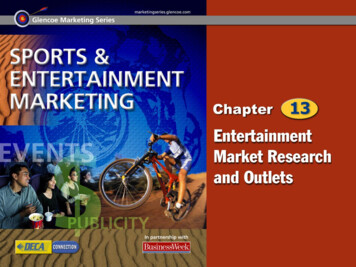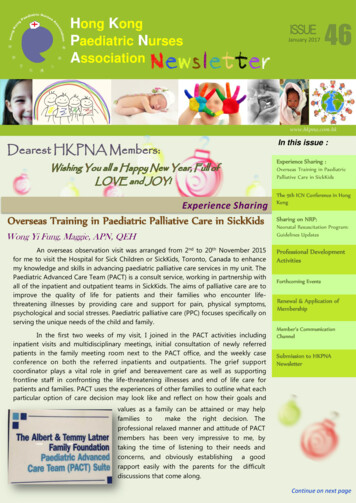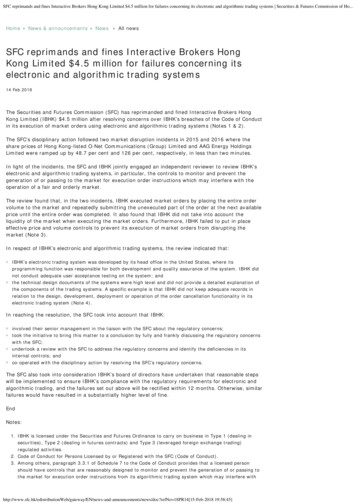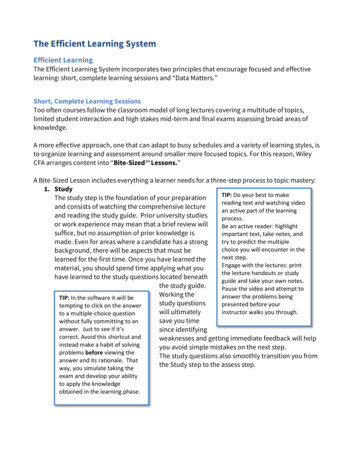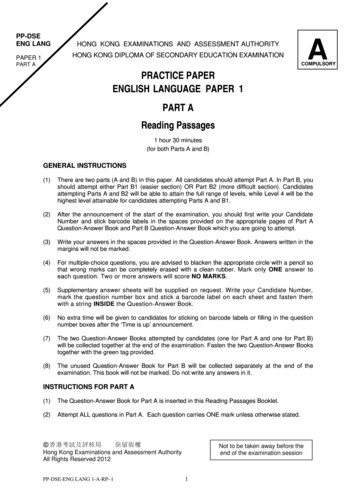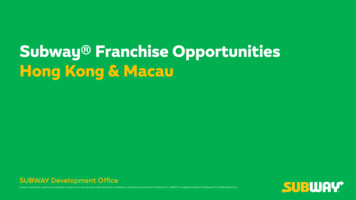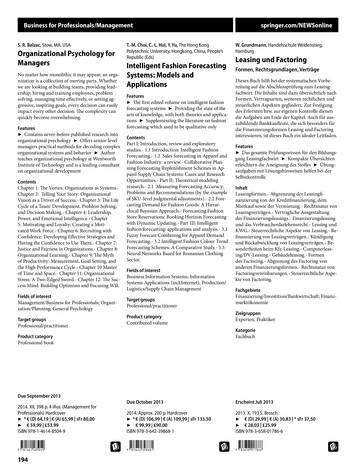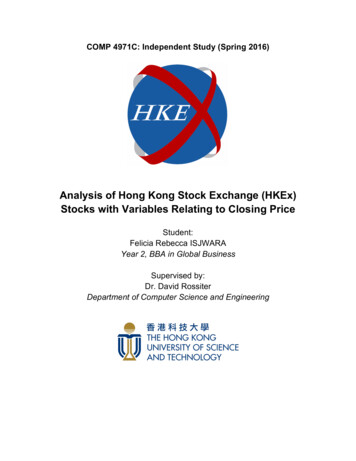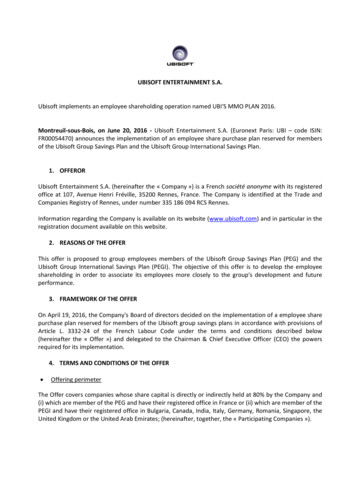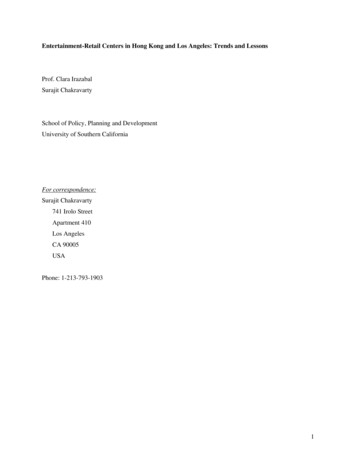
Transcription
Entertainment-Retail Centers in Hong Kong and Los Angeles: Trends and LessonsProf. Clara IrazabalSurajit ChakravartySchool of Policy, Planning and DevelopmentUniversity of Southern CaliforniaFor correspondence:Surajit Chakravarty741 Irolo StreetApartment 410Los AngelesCA 90005USAPhone: 1-213-793-19031
Entertainment-Retail Centers in Hong Kong and Los Angeles: Trends and LessonsAbstractThis paper seeks to answer the question of why Entertainment Retail Centers (ERCs) develop as they doand what we can expect from these centers of consumption in the near future. Beginning with a “network”view of cities, where cities are nodes in an integrated economic system, the paper examines the evolutionof and recent trends in the design of Entertainment Retail Centers (ERCs) in Los Angeles and HongKong. The analysis is organized along four related themes – land use, transportation, urban design andconsumption pattern. The conclusion offers lessons that each city can lean from the other’s experiencewith ERCs.IntroductionThe newer versions of shopping malls whose programs combine entertainment options with moreconventional retail ones are becoming known as entertainment-retail centers (ERCs) (Russell, 1997;Zukin, 1998; Davis, 1999; Beyard, 2001). ERCs aim to boost combined sales per square foot of leasedfloor area from both entertainment and retail markets by offering a convenient and diverse shopping“experience”. ERCs treat entertainment and retail uses as compatible services rather than separate landuses, and build on their complementary nature. They are a complex socio-economic phenomenon becauseof the issues of location, access, design, and consumption patterns associated with them. In the ‘network’view of cities (Castells, 2000, 2005; Sassen, 1991, 2000; Taylor, 2003), ERCs play an important role aspoints of concentration of global capital and cultural production. As such, large-scale ERCs have becomea frequent occurrence in top-tier “global cities” and are showing increasing incidence in cities around theworld. In an ever more globalized world, ERCs are becoming emblematic of the ever greater turn inglobal cities for service-oriented economies and the growing relevance of consumptive- and leisureoriented urban cultures (Fainstein and Stokes, 1998; Fainstein and Judd, 1999).Hong Kong and Los Angeles represent avant-garde examples of these trends in their respective continentsand the world at large (Beaverstock, et al., 2000); Smith and Timberlake, 2002), Through a comparativestudy of selected ERCs in these two global cities, we examine how imperatives of globalization, sociocultural factors, and physical urban conditions are affecting and are affected by the creation andtransformation of these spaces. Within the vastly different contexts of the two cities, we are interested inunderstanding processes of convergence and/or divergence of urban design and planning practices, theircausal factors, and their implications. We also provide insight about the role played by local factors inmediating the influence of globalization. As many other cities around the world follow the development2
paths of Hong Kong and/or Los Angeles, it is important to critically examine their trends to draw lessonsthat can orient both these global cities’ trajectories and those of the cities that follow in their footsteps.The research questions driving this work are: How does the development of entertainment-retail centerscompare in these cities since the mid-twentieth century? What factors have caused a convergence ordivergence of the planning and design of ERCs in these cities? What do we learn from them regarding thespecificity of these cities and the ways in which their institutions and urban fabrics have mediated globaleconomic and cultural forces? And what policy, planning, and design recommendations can be maderegarding the future development of ERCs in both cities so that they maintain or enhance their economicattractiveness and best respond to urban and cultural determinants and needs? The analysis is driven byfour major themes: land use, transportation, urban design, and consumption patterns.There are two main lessons drawn from this comparative study. First, evidence suggests that globalizationdoes not simply homogenize practices and values, as a large part of these cities morphological andcultural evolutions have been ultimately context-dependent. The second is that whereas Hong Kong wascatching up with the American mall phenomenon in the 1960s, it is now leading Los Angeles in thedesign and development of ERCs when we account for the need to move toward more smart-growthpractices such as planning for mixed use, encouraging public transit and pedestrian friendliness, andthinking strategically about the entire city. The study results in recommendations for future urban design,transportation, land use, and city image-making policies related to ERCs, and lessons for designers,planners, city officials, and developers in these two cities and beyond.MethodologyBased on qualitative case study methodology, the project employs triangulation of five key researchmethods. They are literature review (including content-analysis of media), site analysis, participantobservation, user surveys, and semi-structured interviews. The framework of analysis, which includesland use, transportation, architectural and urban design, and consumption patterns, was appliedthroughout the different research methods employed. Aside from scholarly literature review on space andidentity in these two cities in general, and shopping centers, entertainment and retail uses in particular,marketing brochures and Internet sites also served as data for content analysis that contributed to ourunderstanding of how ERCs reflect land use, transportation, design, consumption patterns, and marketsegmentation in each city and how they are used for image-making by these cities’ promoters.Comparative site analyses of ERCs in HK and LA were performed to document and understand theircurrent conditions related to land use, transportation, design, and consumption patterns. Additionally, the3
physical interface with urbanized areas adjacent to the ERCs and the potential for design interventionswere examined. We further studied one representative case study of the most recent typology of ERCdevelopment in each city: The Grove as Los Angeles’s ‘Millennial Generation ERC’, and Pacific Place asHong Kong’s ‘Transit-oriented ERC’. We used participant observation in both cities to experience andassess the ambience and urbanism of the ERCs, and respond to the following questions: Who visits ERCs(age, gender, ethnicity, class, etc.), for how long, what are the purposes of the visits, what retail andentertainment elements are more (or less) patronized, and how do the subvariables studied (related to landuse, transportation, urban design, and consumer patterns) influence their experience of the ERCs. Wecollected more than 60 user opinion surveys administered online to people who have visited ERCs in bothcities. The subjects were sought in students’ associations at USC and UCLA and from among otheracquaintances that have experienced ERCs in HK and LA. These subjects were in turn asked for referralsto other subjects, who were then selected using the snowball sampling technique. This survey wasdesigned to assess the perceptions of visitors regarding their experience of using ERCs in both cities. Thesample has a bias for college students. We have attempted to partially account for this bias by posingquestions regarding the general use of malls in addition to individual experience. We drew on face-to-faceand phone semi-structured interviews with several scholars who have done research and fieldwork ineither Los Angeles or Hong Kong, or both. We also interviewed a dozen survey respondents using a semistructured format for each interview, inquiring further about some of their survey responses and about ourown interpretation of the factors and subvariables in each city. Surveys and interviews were used tovalidate information gathered with other research methods.Hong Kong and Los Angeles: Vastly Different, Uniquely SimilarThese seemingly disparate cities are both globally important centers of consumption, and nodes of highcapital and information flows. In analysis presented by Beaverstock, et al. (2000), both cities are countedamong the “alpha” (p. 127) cities of the world. The designation denotes the “level of service provision”by firms in “accountancy, advertising, banking/finance, and commercial law” (ibid). Only 10 out of 55“world cities” have been classified as ‘alpha’ cities. With only 3 cities in the first tier—London, NewYork, and Tokyo—the authors also analyze linkages to London based on the services provided byLondon-based firms located in the other cities. Although Hong Kong is found to have a stronger link toLondon, Los Angeles is also in the second tier, based on this relationship. According to a study based onair travel data presented by Smith and Timberlake (2002), Los Angeles and Hong Kong hold ranks 7th and8th respectively (in 1997). Here, the rank represents relative “power”, defined as the “ability to dominatethe whole system across spheres” (Burt and Schott, cited in Smith and Timberlake 2002, 123). This broaddefinition is loosely associated with air travel by the authors. Based on these and other various standards4
based on capital, information, and human flows, both cities in question are amongst the most influential inthe world and quite close to each other in global ranking.Further, both cities are home to large multicultural populations. Significantly, the two cities are alsocenters of large entertainment industries, including film, television, and music. These industries areengines of cultural production with wide regional spheres of influence. The large populations in bothcities interact with media flows to create an imagined (although somewhat asymmetrical) relationshipbetween these two cities. In other words, the allusion to symbols (e.g., landmarks, place names, etc.) ofCalifornia (and in particular of Los Angeles) is more frequent in Hong Kong, than vice versa. Some of theprominent signifiers in Hong Kong include ‘Westwood’, ‘Bel Air’, ‘Hollywood’, and ‘California’ itself.In terms of urban form, however, the two cities are poles apart. Whereas Hong Kong is characterized byhigh density and reliance on public transportation, Los Angeles represents sprawl and car-dependence.These remarkable differences notwithstanding, the two cities show several significant similarities in theirapproach to designing entertainment-retail spaces. The similarity, or convergence towards a similar style,is not typical of these two cities alone. It is the vast differences that separate these two cities, however,what make the similarities all the more significant and worthy of inquiry. The phenomenon points to theexistence of a logic of markets, which transcends geographical boundaries. This internal logic is moreapparent in the case of cities most integrated with networks of global capital.Evolution of Shopping Centers in the Two CitiesBoth Los Angeles and Hong Kong have inspired a vast body of work on all aspects of planning. Thispaper deals with only a specific part of these complex cities. We are looking at the historical evolution ofentertainment-retail centers in the context of the variables of land use, transportation, and urban design,along with associated socio-economic and cultural trends related to consumption. Additionally, we areconcerned with how these cities evolved as centers of consumption and entertainment, and how thesefunctions, mediated by their entertainment-retail spaces came to be a major determinant of the veryidentity of these cities.The conceptualization of the entertainment-retail center follows the observed trend, in recent years, of theincreased cohabitation of entertainment (including spaces for social congregation and interaction) andretail activities in spaces of consumption (Goss, 1993; Shillingburg, 1994; Zukin, 1998; Beyard, 2001).This tendency to create an economy of scale in terms of clientele also has political implications. Mostsignificantly, it brings certain activities that were traditionally part of the public sphere into the privaterealm. Additionally, the globalization of the economy has led to the creation of consumptive societies,5
and the propinquity of entertainment and retail in fast growing metropolises has facilitated this process.The resulting hybrid urban programs and forms of ERCs are a product of the interaction of local placebased characteristics with less place-grounded spatial arrangements designed for a globalized economicagenda and cultural taste.Our research is based on a framework of four variables – land use, transportation, urban design andconsumption pattern. The findings, based on these variables, suggest that since the 1960s there was aconvergence in retail center styles in the two cities studied, with Hong Kong following the trendsobserved in Los Angeles (and the United States in general). Large shopping centers, which had becomecommon in the United States were replicated in Hong Kong capturing both the climate and the economiesof scale. This, however, was followed by a divergence of styles in the late 20th century with each citydeveloping in accordance with its own spatial, political, and market contexts. Whereas ERCs in LosAngeles followed its sprawl and decentralization, in Hong Kong ERCs tended to become a part of thecity’s contiguous fabric. At the turn of the new century, a degree of convergence has once again emergedwith entertainment and retail increasingly coexisting in the same place and hybrids of earlier styles beingcreated. This new convergence suggests that in postmodern global cities, certain urban processes arebecoming increasingly context-free. In other words, these processes are being defined to a large extent by“agencies
Kong. The analysis is organized along four related themes – land use, transportation, urban design and consumption pattern. The conclusion offers lessons that each city can lean from the other’s experience with ERCs. Introduction The newer versions of shopping malls whose programs combine entertainment options with more conventional retail ones are becoming known as entertainment-retail .
